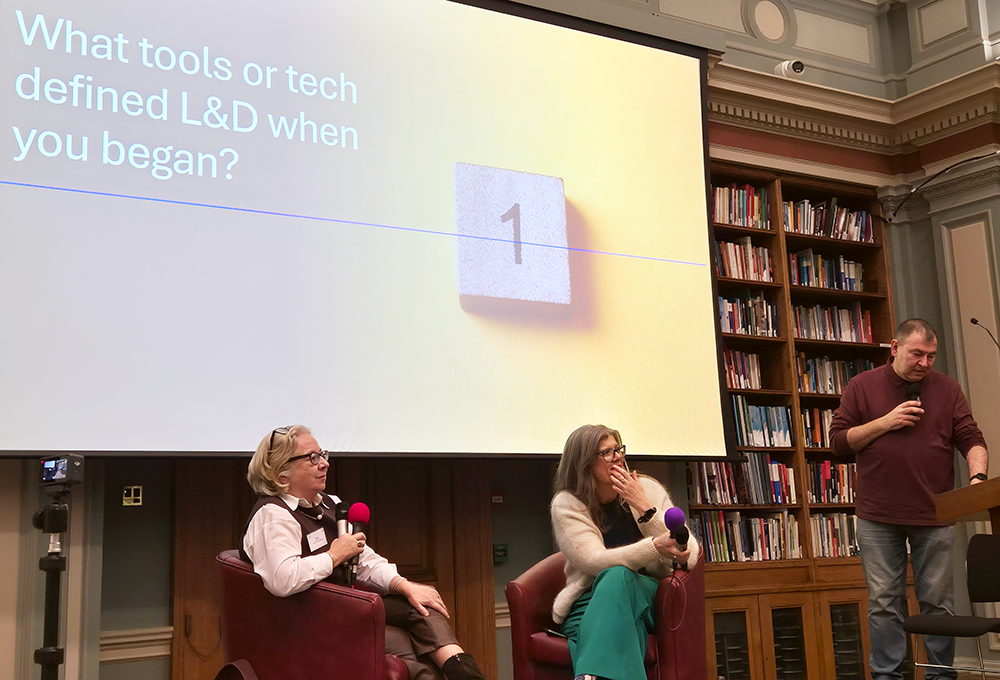Vlatka Hlupic reveals how gamification can unlock creativity and create competitive advantage.
Reading time: 5 minutes
Many organisations today struggle with low productivity, low performance, low trust and lack of purpose. Furthermore, despite huge sums spent on employee engagement programmes recent data shows that engagement levels remain low at 15%.
At the same time, we are entering the fourth industrial revolution (4IR), with unprecedented pressure on companies to innovate, compete, and raise both performance and profit.
What can companies do to unlock the wisdom and creativity that exists within their workforce and become more engaging and high performing? How can training help them facilitate team cohesion, exploit diversity of thought, and enable people to raise their game?
What has become rapidly clear, is that in our fast-moving and increasingly connected environment, people at the top do not have all the answers. Leadership today is about inspiring people to ignite their passion for work and creativity – yet many leaders do not know how to achieve this.
The power of gamification
Gamification can help achieve these aims. It can unlock an organisation’s creativity and uncover hidden gems of knowledge to create competitive advantage. It can help employees at different level of mindset to learn and collaborate.
Science has proven that it takes approximately 400 repetitions to make a new synapse in the brain, unless it is done with play, in which case it takes between 10 and 20 repetitions.
Gamification not only stimulates this type of learning but also collaborative learning where solutions to problems are realised through the input of several people.
The neuroscience of learning shows that the brain needs conditions under which it is able to change in response to stimuli and able to produce new neurons.
It takes approximately 400 repetitions to make a new synapse in the brain, unless it is done with play, in which case it takes between 10 and 20
The most effective learning involves engaging different parts of the brain for the learning task, invoking understanding, remembering, as well as higher-level cognitive functions such as decision-making, association and motivation.
The higher-level more complex cognitive processes are more beneficial for learning because they involve a greater number of neural connections.
Gamification stimulates this type of learning, and also strengthens diversity of thought, because it enables people to learn from mindsets that are different to their own.
Making a management shift
Much has been written about gamification in the context of online simulations or interventions based around virtual reality. But in fact, the good old-fashioned board game is just as effective in helping people shift their thinking and achieve ‘lightbulb’ moments. In order to facilitate learning and development in organisations, my team and I have designed a new board game based on research published in my book The Management Shift.
The game offers managers a practical systemic approach to diagnosing leadership issues in an organisation – and identifying what shifts in mindset, process and culture need to take place to enable a higher level of performance and ultimately business success.
A good place to start in addressing the problem of disengagement is to look at the issue of diversity of mindsets through the lens of the 5-Level Emergent Leadership model (below).
Research shows that there are five levels that our individual mindset is going through as we develop our consciousness in stages, and there is a corresponding organisational culture at each of those levels with different levels of engagement.
Each level is characterised by specific thinking patterns, behaviour, language used, leadership style and organisational outcomes.
At Level 1 a dominant mindset is ‘lifeless’, while culture is apathetic’, based on fear, and employees are isolated and completely disengaged.
At Level 2 the individual mindset is ‘reluctant’, and culture is ‘stagnating’. At this level people do the minimum they can get away with. Leadership is uninspiring, there is a blame culture, and employees feel overwhelmed. The majority of employees are disengaged, with some engagement occasionally emerging.
At Level 3 the mindset is ‘controlled’ and culture is ‘orderly’. Leadership style is based on traditional command and control, employees are micromanaged, and they do what they are told to do.
The level of engagement is higher than at Level 2, but that is achieved mainly though extrinsic motivation – a ‘carrot and the stick’ approach.
At Level 4 the dominant mindset becomes ‘enthusiastic’ and the culture ‘collaborative’ and there is a strong teamwork ethos.
Integrity, passion, purpose, transparency, accountability, and caring culture are embedded in this level. A highly engaged and inventive performance begins, largely fuelled by intrinsic motivation.
At Level 5 mindset becomes ‘limitless’ and culture ‘unbounded’ and people feel that anything can be achieved. This is where amazing innovations are developed and big problems for humanity are solved.
The level of engagement is very high, driven by passion, purpose and desire to make this world a better place.
During the game, players are introduced to the vocabulary, structure and philosophy of The Management Shift® approach, which can be applied to the senior team and more widely across the organisation.
Players identify specific actions that the group or organisation need to work on in order to create better business agility, and look at how they can overcome obstacles that might hinder their success.
The first step is to look at the big picture of how the organisation is operating, using prompt ‘metaview’ cards.
Players score how well an organisation is doing overall in the areas of culture, relationships, individuals, strategy, systems and resources.
Next, players reflect on and begin to explore the people and process related aspects of the organisation and the impact they are having on the business.
A set of ‘typical obstacles’ cards give suggestions of scenarios people may have encountered in the past, or are experiencing now.
Finally, the game helps people understand how to practically start to address these and take action.
The game is a serious play intervention that anyone can engage with. It provides senior teams with an easy and accessible way to envision, articulate and begin the process of enabling their organisation to become more humane, high-performing and productive.
It provides a safe space for experiential learning and is a catalyst for creativity and collaboration across today’s multigenerational workforces.
Gamification has an important role to play in supporting learning that is impactful and can be applied immediately in the workplace. And because individuals feel they ‘own’ the solution, it has a corresponding impact on motivation and engagement.
About the author
Vlatka Hlupic is Professor of Leadership and Organisational Transformation at Hult Ashridge Executive Education.



